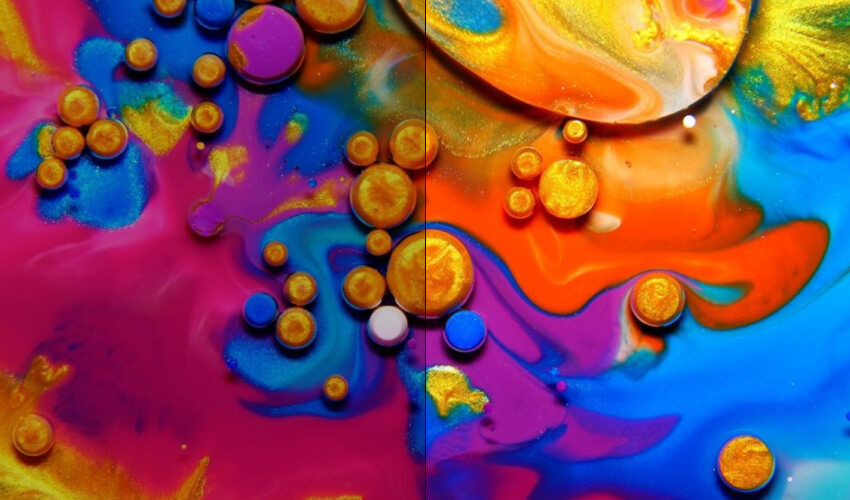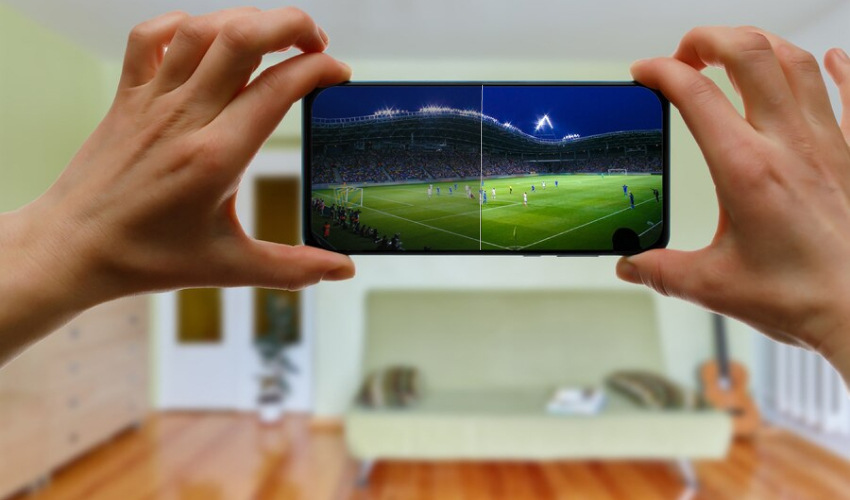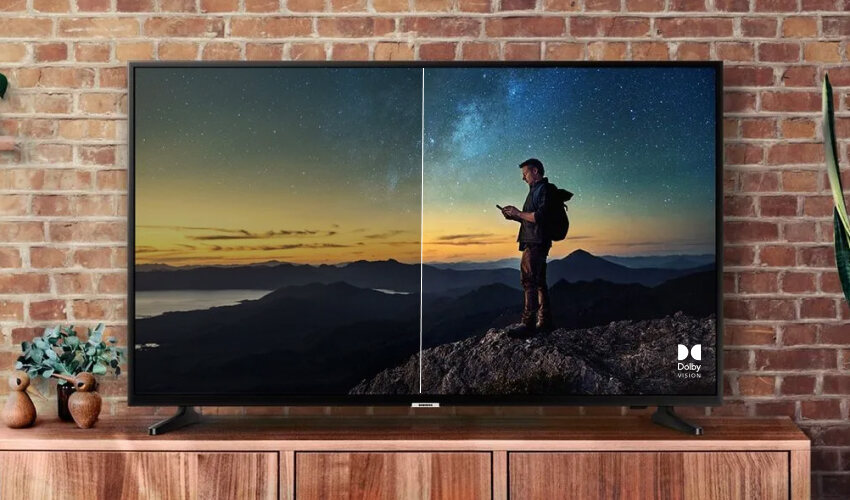In today’s rapidly evolving visual media landscape, the quest for a more immersive and lifelike viewing experience has led to the rise of High Dynamic Range (HDR) technology. This revolutionary advancement enhances our screens with heightened contrast, richer colors, and unparalleled realism.
Among the array of HDR formats, Dolby Vision HDR stands out as the beacon of premium quality. It’s not just about brighter highlights and deeper shadows; Dolby Vision goes beyond, meticulously preserving every nuance of a scene with its dynamic metadata. In this blog, we embark on an illuminating journey to demystify Dolby Vision HDR, unraveling its inner workings, benefits, supported platforms, and the exciting future for media enthusiasts.
What is Dolby Vision HDR?
At its core, HDR (High Dynamic Range) technology revolutionizes visual experiences by expanding the range of contrast and colors, allowing screens to mirror the complexity of the real world. Within this realm, Dolby Vision HDR emerges as a trailblazing advancement. It’s not just about brighter whites and deeper blacks but the meticulous preservation of intricate details through dynamic metadata.
Dolby Vision doesn’t just adhere to industry standards; it sets them by precisely calibrating each scene, enhancing luminosity, and providing a breathtakingly lifelike and immersive encounter. Dolby Vision’s mission is to transport viewers into a world where each image resonates with the authenticity of the moment it captures, revolutionizing how we perceive visual content.
How Does Dolby Vision Work?
Dolby Vision is a pinnacle of HDR technology, offering a transformative viewing experience. At its core, Dolby Vision enhances content by meticulously managing three crucial components: contrast, color, and metadata. It elevates contrast by extending the dynamic range, making blacks deeper and whites brighter.
The wide color gamut immerses viewers in a spectrum of lifelike hues, while the magic lies in dynamic metadata, which optimizes each frame individually. Unlike static HDR formats, Dolby Vision adapts to scene-by-scene nuances, ensuring every detail is finely tuned for maximum impact. This technology harmonizes the science of display with the art of storytelling, redefining visual narratives with unprecedented realism and depth.
Does Dolby Vision HDR have better image quality?

Indeed, Dolby Vision HDR significantly enhances image quality, transcending conventional viewing experiences. Dolby Vision captures intricate details that would otherwise be lost by meticulously managing contrast, brightness, and color. The expanded dynamic range creates a striking difference between bright highlights and deep shadows, lending scenes a breathtaking depth. The color spectrum widens to produce richer, vibrant hues that mirror reality.
What truly sets Dolby Vision apart is its dynamic metadata, which adjusts frame by frame for optimal rendering. This amalgamation of technical finesse culminates in superior image quality, immersing viewers in a world where visuals echo the subtleties of our perception, elevating content to new heights of realism and engagement.
Also See : Xreal Air 2 Pro vs. Apple Vision Pro Glass: Which One to Buy
Benefits of Dolby Vision
In visual innovation, Dolby Vision shines as a beacon of heightened excellence, offering various benefits that redefine how we perceive and interact with content. Its superiority is evident not only in the exceptional clarity it brings to images but also in the brilliance of its enhanced brightness and the precision of its color accuracy.
Beyond technical prowess, Dolby Vision masterfully weaves depth and realism into every frame, breathing life into scenes like never before. As we explore its virtues, we’ll uncover how Dolby Vision’s compatibility spans various display technologies, promising a transformative visual experience that caters to diverse audiences. Join us on a journey through the realms of superior quality, immersive viewing, and seamless adaptability that Dolby Vision bestows upon the world of visual content.
Dolby HDR on mobile phones

The benefits of Dolby Vision span a tapestry of enhanced visual experiences, revolutionizing how we engage with content. With superior visual quality, scenes become vibrant tapestries of color accuracy, brightness, and contrast, unveiling details previously unseen. The immersive viewing experience deepens as Dolby Vision adds depth and realism, drawing us into narratives like never before.
Its compatibility across various display technologies ensures that its brilliance shines across devices. As we traverse landscapes of cinema, gaming, and beyond, Dolby Vision’s precision and innovation redefine what we consider possible, amplifying our connection with content and unveiling a world where every pixel paints a story with unprecedented richness.
What about Dolby Vision HDR for Gaming?
Dolby Vision HDR’s impact on gaming is nothing short of revolutionary. As gamers strive for heightened realism and immersive gameplay, Dolby Vision becomes a game-changer. Enhancing contrast, color, and brightness creates an unparalleled visual canvas where every pixel is meticulously painted for maximum impact. The result is stunning graphics and a heightened sense of presence.
From the vibrant environments of open worlds to the shadows of suspenseful corridors, Dolby Vision elevates gaming narratives. As gaming consoles embrace this technology, it promises to reshape how we perceive and interact with virtual realms, propelling us into a future where gaming transcends mere entertainment to become a multisensory experience.
TV Dolby Vision

TVs featuring Dolby Vision technology are portals to a new realm of visual brilliance. Dolby Vision elevates TV viewing by integrating High Dynamic Range (HDR) technology that dynamically enhances contrast, color accuracy, and brightness. With a focus on frame-by-frame optimization, Dolby Vision ensures that each scene is meticulously calibrated for lifelike realism.
The technology transforms televisions into immersive canvases, where shadows hold depth, colors pop with vibrancy, and highlights shine with unparalleled brilliance. As you watch movies, TV shows, and play games, Dolby Vision captures the intricacies of every visual detail, creating a viewing experience that resonates deeply. In a world saturated with content, Dolby Vision is a beacon of excellence, redefining how we perceive and connect with on-screen narratives.
4k Dolby Vision
The synergy of 4K resolution and Dolby Vision technology redefines visual immersion. 4K Dolby Vision presents content in ultra-high resolution, boasting four times the pixels of standard HD. With Dolby Vision’s dynamic HDR enhancements, this technology transforms screens into windows to breathtaking worlds: vivid colors, intricate details, and heightened contrast become a reality, transcending traditional viewing experiences.
From movie scenes to gaming landscapes, 4K Dolby Vision unveils layers of realism previously unseen. As pixels converge with dynamic metadata, the content resonates with lifelike vibrancy. In the ever-evolving visual landscape, 4K Dolby Vision is a testament to the convergence of resolution and innovation, delivering visuals bridging the gap between imagination and reality.
Dolby Vision Production Process
The Dolby Vision production process is an intricate symphony that transforms ordinary content into extraordinary visual experiences. It commences with content creation, where filmmakers leverage technology to capture scenes with unparalleled richness. In post-production, color grading and dynamic metadata embedding unfold, meticulously adjusting every frame for optimal vibrancy and contrast.
This process culminates in a seamless streaming and playback experience as Dolby Vision content finds its way onto diverse devices, from home theaters to mobile screens. As we unveil this journey, it’s evident that Dolby Vision doesn’t just improve visuals; it elevates storytelling, creating a bridge between the creative process and the final, captivating result that captivates and enthralls audiences worldwide.
Devices and Platforms Supporting Dolby Vision
Dolby Vision’s transformative allure extends across various devices and platforms, ensuring a rich and consistent viewing experience. Leading the charge are smart TVs from major manufacturers, including names like LG, Sony, and TCL, which embrace Dolby Vision’s brilliance. Streaming enthusiasts can revel in the compatibility of platforms like Netflix, Disney+, and Apple TV alongside streaming devices such as Roku Ultra and Amazon Fire TV.
Gaming aficionados, too, are still catching up, as gaming consoles like Xbox Series X|S and PlayStation 5 incorporate Dolby Vision to heighten the visual splendor of virtual worlds. The universality of Dolby Vision compatibility across these devices promises a harmonious and immersive encounter with content, regardless of one’s preferred platform.
Dolby Vision vs. Other HDR Formats
In the dynamic arena of HDR formats, Dolby Vision emerges as a frontrunner with its distinct advantages. When compared to HDR10, Dolby Vision’s dynamic range and metadata precision set it apart. Where Hybrid Log-Gamma (HLG) struggles in specific scenarios, Dolby Vision shines, offering deeper contrasts and more vibrant colors.
The adaptability of Dolby Vision, however, extends further – content can be reconfigured to suit other HDR formats, ensuring compatibility without sacrificing its core visual enhancements. Dolby Vision’s ability to seamlessly deliver richer, lifelike visuals, both within its framework and in collaboration with other formats, underscores its role as a transformative force in the world of high-quality imagery.
Dolby Vision Content Availability
Streaming Services: Dolby Vision’s visual brilliance is readily accessible on popular streaming platforms like Netflix, Apple TV+, Amazon Prime Video, and Disney+. These platforms ensure a diverse array of content, from movies to TV shows, is enriched by Dolby Vision’s immersive technology.
Also See: 20 Biggest and Best OTT Platforms for Streaming in 2023
Movies and TV Shows: Iconic titles like “Black Widow,” “Stranger Things,” and “The Mandalorian” have embraced Dolby Vision’s captivating allure. From action-packed blockbusters to captivating series, these offerings have redefined the viewing experience, demonstrating Dolby Vision’s potential to elevate narratives across genres.
Future Trends: The trajectory of Dolby Vision content is a promising one. As the technology gains further traction, it’s likely to expand beyond mainstream entertainment, potentially infiltrating gaming, educational content, and beyond. The captivating realism and enhanced visuals offered by Dolby Vision could become a standard feature in an ever-expanding range of content, captivating audiences and creators alike.
Setting Up Dolby Vision at Home
Display Requirements: To unlock the full potential of Dolby Vision, a compatible display is paramount. Look for TVs with the Dolby Vision logo, indicating they meet stringent color accuracy, brightness, and contrast requirements. OLED and high-end LED TVs are prime choices, as they excel in reproducing the nuanced visuals Dolby Vision offers.
Device Settings: Enabling Dolby Vision on your compatible device is straightforward. Navigate to your device’s settings, then to the display or picture settings. Locate the HDR settings and enable Dolby Vision. Setting it to ‘Auto’ is usually advisable to allow the device to switch to Dolby Vision when compatible content is detected.
Calibration: Proper display calibration is pivotal in experiencing Dolby Vision’s true magic. Consider utilizing professional calibration tools or services for optimal color accuracy and brightness. Alternatively, most TVs offer built-in calibration settings to improve the viewing experience. Regular recalibration ensures that you consistently enjoy the nuanced visuals Dolby Vision has to offer, just as the creators intended.
See More: 20 Best Firestick Apps In 2023 – Unlimited Movies & TV Shows
FAQs
1. What is Dolby Vision, and how does it differ from other HDR formats?
Dolby Vision is an advanced HDR technology that enhances content by offering a broader dynamic range, richer colors, and frame-by-frame adjustments. Unlike other formats, it employs dynamic metadata for precise scene optimization, resulting in a more immersive viewing experience.
2. Is my TV compatible with Dolby Vision?
Many modern high-end TVs from brands like LG, Sony, and TCL support Dolby Vision. Look for the Dolby Vision logo or check your TV’s specifications in the user manual.
3. Where can I find Dolby Vision content to watch?
Dolby Vision content is available on streaming platforms like Netflix, Disney+, and Apple TV+. Look for titles with the Dolby Vision logo or filter content based on HDR.
4. Can I enjoy Dolby Vision on my gaming console?
Yes, gaming consoles like Xbox Series X|S and PlayStation 5 support Dolby Vision for specific games, delivering a more immersive gaming experience with enhanced visuals.
5. How does Dolby Vision impact battery life on mobile devices?
Dolby Vision enhances the visual experience but can consume more power due to increased processing requirements. Consider adjusting settings for a balance between quality and battery life.
6. What is a 4K Dolby Vision TV?
A 4K Dolby Vision TV combines ultra-high 4K resolution with Dolby Vision HDR technology for exceptional contrast, vibrant colors, and dynamic scene optimization.
7. Does a 4K Dolby Vision TV require special settings for optimal performance?
Adjust your TV’s settings to enable Dolby Vision when watching compatible content. Most TVs offer automatic detection.
8. Is 4K Dolby Vision content widely available?
Primary streaming services offer 4K Dolby Vision content, enriching your entertainment with vivid visuals and enhanced realism.
9. Can I watch non-Dolby Vision content on a 4K Dolby Vision TV?
A 4K Dolby Vision TV is compatible with various content formats, delivering improved visuals even with non-Dolby Vision content.
10. Are 4K Dolby Vision TVs energy-efficient?
While they consume more power due to advanced processing, many 4K Dolby Vision TVs have energy-saving features and settings.
11. Can gaming consoles take advantage of 4K Dolby Vision?
Some gaming consoles support 4K Dolby Vision, enhancing your gaming experience with heightened graphics and dynamic HDR effects.
12. How does 4K Dolby Vision compare to other 4K HDR formats?
4K Dolby Vision offers dynamic scene-by-scene adjustments through metadata, providing more precise and immersive HDR than static HDR formats.
Conclusion
Dolby Vision HDR is a beacon of excellence in visual innovation, transforming how we perceive and engage with content. From its advanced mechanics that meticulously orchestrate contrast and color to its compatibility with various devices, Dolby Vision has redefined the possibilities of visual storytelling.
As we bid adieu to this exploration, we’re left with a profound realization – Dolby Vision isn’t just technology; it’s a journey that propels us into realms of unparalleled realism and immersion. With every frame, Dolby Vision paints stories that resonate deep within us, bridging the gap between imagination and reality.


